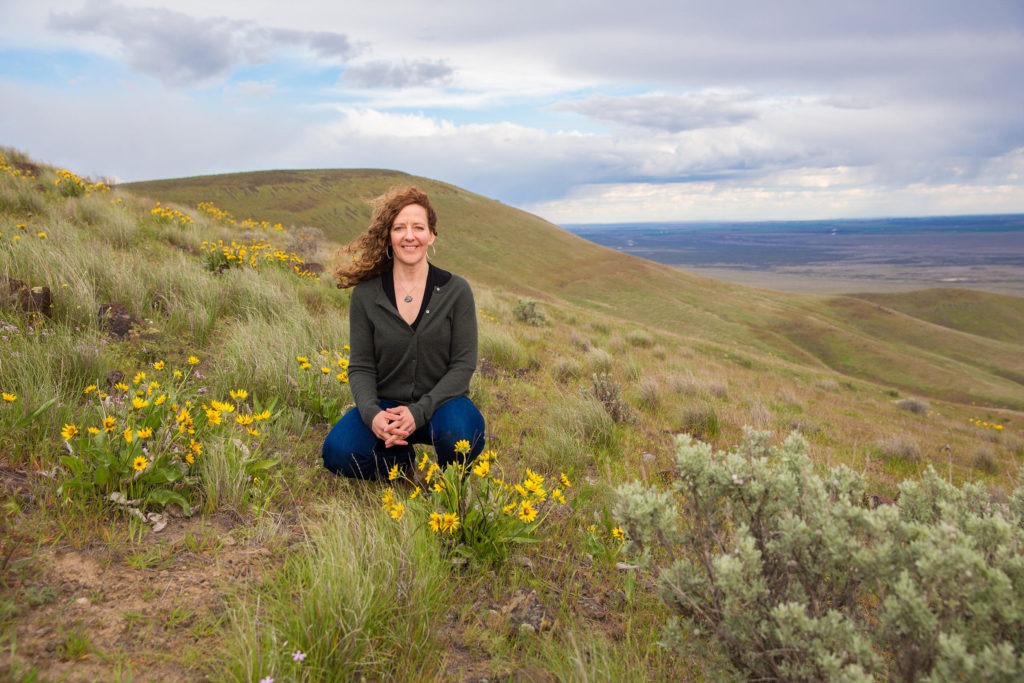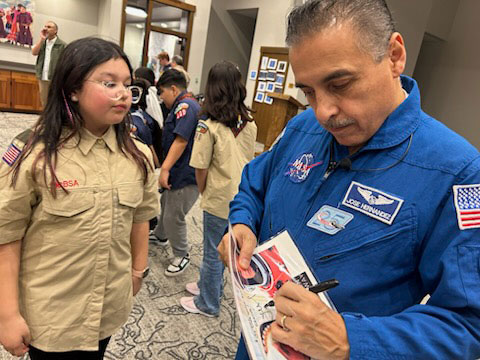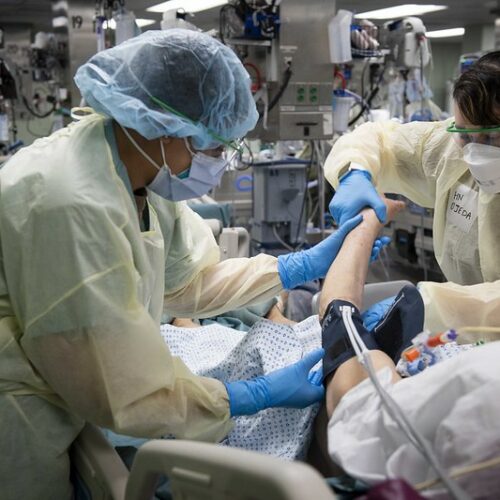
Daughters of Hanford: A Landscape Written With Human Stories

Listen
Originally published on October 1, 2015
In southeast Washington state, a group of farms has been frozen in time. It’s at Hanford, the area the federal government took over to make plutonium during World War II.
“It’s amazing that it’s been preserved in a way by the Manhattan Project,” said archaeologist Ellen Prendergast Kennedy. “And that some places are still completely untouched.”
Left untouched since 1943, when the government gave people a month to leave. The whole area has been restricted since then to make plutonium for bombs and clean up after it.

Ellen (Prendergast) Kennedy’s first archaeology job in Washingon state was with Archaeological and Historical Services near Vantage, Wash.
Nearly 60 years later, Kennedy was working for the federal government, collecting oral histories of people who’d been forced off the land.
“You know these places were people’s homes and that we now call cultural resources,” she said. That’s science-lingo for a landform, building, tools or anything left behind or important to humans.
‘I’m always looking at the ground’
Kennedy is always looking down.
“All the time,” she said. “That’s what you do when you’re an archaeologist. No matter where I am, if I’m out at my property where we live, I’m always looking at the ground.”
Kennedy stops amid the sagebrush on the Hanford Reach. She stoops down. Picks up something dime-sized. It’s brown.
“It could be a lithic flake,” she said. “It could have been knocked off of a rock as part of a tool-making process.”
That she spotted this small bit isn’t so surprising. Kennedy started her career right here at Hanford.

Ellen (Prendergast) Kennedy works on an archaeological testing project at the Hanford nuclear reservation with co-worker Eric White in 2010.
Getting close to a lived experience
On a hot day in 2001, Kennedy drove a woman in her 80s out to the restricted Hanford site. They were headed to the woman’s old farmstead. The woman laid eyes on that land for the first time since WWII.
“And in the background of course was the reactors, so you could see that,” Kennedy recalled.

Ellen (Prendergast) Kennedy’s first archaeology job in Washingon state was with Archaeological and Historical Services near Vantage, Wash.
When they arrived the woman recognized a small rise in the land where her home had been. Then she pointed to a plant. It was a matrimonial vine she and her husband planted when they first settled this farm. And now here the vine was — still growing — 60-years later without care. It was a big moment, with few words.
“People of a certain generation aren’t as expressive as younger folks are especially when experiencing things, at least emotionally,” Kennedy said. “So I kind of got the sense that she was a little more in awe kind of and surprised than maybe she let on.”
“It took me back to what her experience was. She had been married and I think she had already had kids just before they were made to leave.”
This is at the core of Kennedy’s work. Getting as close as possible to a lived experience from the past.
“It made me in my own way think, ‘I wonder what that was like to be a mother, and a farmer’s wife in this, in this, in this place,’ Kennedy said. “I feel like I was able maybe to put myself more in her shoes a little bit.”
One big history book
Kennedy said many evicted farmers, like this woman, had mixed feelings toward their country: Patriotism and bitterness.
Those feelings and stories have been preserved. Some have not been released to the public. Others are included in government reports. Stories like the woman from the farm — of artifacts, memory and loss.
“So you can hear that story, and then if you can attach that story to the landscape,” Kennedy said. “It’s just so evocative. The landscape itself. And with the story’s texture and character and it kind of makes it come alive.”
Kennedy said Hanford’s landscape is one big history book — tribes, farmers, the Great War. To read it, you have to stare closely at the ground.
—–
Our Daughters of Hanford series includes women with all kinds of experiences with the nuclear site — scientists, secret-keepers and critics. Find more at daughtersofhanford.org. The stories and photos are in an exhibit open now at the REACH in Richland.
Additional links to Ellen Prendergast Kennedy’s published work:
- Perceptions of the National Register Nomination Process
- U.S. Department of Energy’s Hanford Cultural Resources Laboratory Oral History and Ethnography Task Annual Report
- Hanford Site National Environmental Policy Act (NEPA) Characterization
- VIDEO: Cultural Resources Sensitivity Training for all Work Associated with the CCCF Located on Rattlesnake Mountain
- Historic preservation: An unusual way to protect human subjects in research
- Protecting Traditional Places Located on Private Property in Western Washington
- Cultural Resources Review for Closure of the Nonradioactive Dangerous Waste Landfill and Solid Waste Landfill in the 600 Area
9(MDEwMDE0NjgyMDEzNDY0NDY5NTBmNTc1Yg004))
Related Stories:

Washington, Idaho rank high for public health emergency preparedness
Both states saw steady or increased funding for public health, but Idaho still among lowest for vaccinations.

How does climate affect your life? Tri-Cities survey open now
Cities, towns and counties are starting to plan for a future with climate change. Now, the Tri-Cities area is asking people about regional hazards and historical trends. (Credit: Simon Foot

Con manifestación en Tacoma, Unión de Campesinos llama a boicot contra Windmill Mushrooms
Personas de diferentes lugares del estado de Washington viajó a Tacoma para manifestarse en apoyo a los trabajadores agrícolas frente a una tienda Safeway el lunes por la tarde.












